Contents
- Is it possible to give an antipyretic with antibiotics to a child?
- Is it necessary to give an antibiotic to a child with a temperature?
- Can a child walk while taking antibiotics?
- Can antibiotics be given to children under one year old?
- List of antibiotics that can be prescribed to a child
- What is the right way to give antibiotics to children?
- Consequences of taking antibiotics
- Recovery of the child’s body after antibiotic treatment
- Can a child be cured without antibiotics?
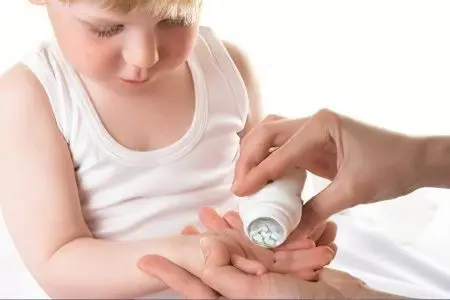
Preparations of this pharmaceutical group are prescribed exclusively for bacterial infections. These can be serious conditions such as meningitis or pneumonia that threaten the life of the child. Treatment of such infections occurs in a hospital based on the results of laboratory tests and the doctor’s observation of the patient.
Treatment of diseases of moderate and mild severity most often occurs on an outpatient basis, that is, at home. The doctor prescribes an antibiotic based on the examination of the child and the symptoms given by the parents.
In both cases, he is guided by the following principles:
Timely prescription of effective drugs with proven effectiveness.
Use of antibiotics only if necessary.
Visually, it is quite difficult to tell the difference between viral and bacterial infections. Currently, there are no laboratory methods that allow to clarify the source of infection of the respiratory system as soon as possible. It is known that the common cold and acute bronchitis are viral in nature, while sinusitis and acute otitis media occur due to the action of bacteria.
It follows that antibiotic treatment of acute respiratory tract infections should be differentiated.
For colds and bronchitis. Antibiotics are not used in the treatment of these diseases. However, parents begin to give them 1-2 days after the onset of cough and fever in the child, fearing that such a complication of bronchitis as pneumonia will appear. Such measures will not help prevent pneumonia.
Symptoms of pneumonia:
Significant increase in body temperature;
Dyspnea;
Coughing.
Correction of the treatment regimen with the appearance of such symptoms is carried out by a doctor. If of all the above symptoms, only fever is present for 3 days, antibiotics should not be used. With viral infections, hyperthermia for 3-7 days is a natural phenomenon. Subfebrile temperature (+ 37 + 37,5 ° C) is not a sign of a bacterial infection, but a consequence of other reasons.
A viral infection is characterized by a prolonged cough with an improvement in the child’s condition against a background of normal temperature. Antibiotics are not cough suppressants. Cough is a protective reaction of clearing the airways of mucus, it disappears one of the last among all the other symptoms of the disease. Prolonged cough, lasting for 3-4 weeks, requires clarification of the etiology.
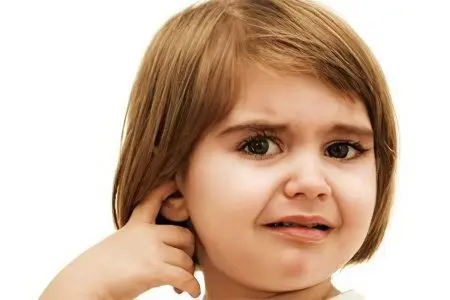
At the Otis. In about half of cases of acute otitis media, it is of bacterial origin. However, until recently, antibiotics were prescribed to all patients with this diagnosis. The clinical picture of otitis media includes severe pain lasting 1-2 days. Then the picture of the disease changes for the better, pain and inflammation subside. After 2 days, symptoms persist only in 30% of children. According to studies, antibiotics can provide effective help in only one in twenty cases of acute otitis media.
The remaining 19 children, who were given antibiotics for no reason, will not suffer. 2-3 babies may develop skin rashes, diarrhea, symptoms that quickly pass. The appointment of antibiotics does not guarantee that purulent complications will not appear. Complications arise, both in children who took antibacterial drugs, and in those who did not take them.
In modern pediatrics, there is a standard treatment for acute otitis media with antibiotics. They are prescribed even with a possible diagnosis of “acute otitis media” to all children under 6 months. In the treatment of children from six months to 2 years, a waiting tactic is used, when, with a mild course of otitis media, they are limited to monitoring the baby. The child is given analgesics and antipyretics for 1-2 days. If during this time his condition does not improve, begin treatment with antibiotics.
The leading role in such tactics is assigned to the parents of the child. They must correctly assess the signs of the disease, the dynamics of pain, the addition of new symptoms to the previous symptoms – cough, rash. In order not to miss the right time, it is advisable to take care of the antibiotic prescription written by the doctor in advance.
Treatment of otitis in children older than 2 years also begins with waiting and monitoring the baby for 2 days. An exception to this rule is a severe course of otitis media, high fever, severe pain. (read also: Purulent, catarrhal, exudative and otitis media in children)
With inflammation of the lungs (pneumonia). A confirmed diagnosis or suspicion of pneumonia requires special tactics for the use of antibiotics. Half of the cases of pneumonia in children aged 5-6 years are caused by viruses. Children over 6 years of age are more likely to develop pneumonia of a bacterial nature (causative agent – pneumococcus). Infection with this virus entails such severe manifestations of the disease that the diagnosis of “pneumonia” is always an indication for the appointment of antibiotics.
Is it possible to give an antipyretic with antibiotics to a child?
According to pediatricians, any antipyretic intended for children should be given at an elevated temperature. The combination of these drugs with antibiotics is not dangerous for the child. It is important to bring the fever down in a timely manner.
Is it necessary to give an antibiotic to a child with a temperature?
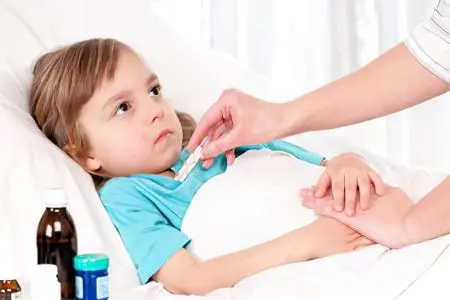
An increase in body temperature is a reaction of the immune system of the human body to the invasion of viruses or bacteria into it, the development of autoimmune diseases, tumor processes. The abundance of causes that cause fever does not give reason to use antibiotics immediately after the onset of fever or a feverish state. The doctor must first determine the cause of hyperthermia.
If a bacterial factor has joined the viral component, antibiotics are prescribed. It is quite difficult to note such a transformation even for a doctor, not to mention the parents of the child, the symptoms of viral and bacterial lesions of the respiratory tract are so similar. A possible symptom of a bacterial complication is a persistent increase in temperature during the week, or an increase in it after the onset of the disease.
Diseases accompanied by hyperthermia:
Acute otitis media;
Sinusitis, or inflammation of the paranasal sinuses;
Complications of a purulent nature (lymphadenitis, laryngotracheitis).
The doctor selects antibiotics based on laboratory data and the clinical picture of the disease. If the drug is chosen correctly, after 1,5-2 days after the start of treatment with antibacterial drugs, the temperature begins to decrease. Otherwise, the drug is replaced by another remedy. Too early termination of the course of treatment leads to relapse of the disease or its transition to a chronic form.
Can a child walk while taking antibiotics?
Walking in the fresh air is very useful for the speedy recovery and rehabilitation of a child after an illness. Even if he is undergoing antibiotic treatment, the baby should walk daily, provided that he is not assigned to bed rest, there is no elevated body temperature. It is important to dress the child in accordance with the weather, avoiding hypothermia and being in a draft.
Can antibiotics be given to children under one year old?
Infants are prescribed antibiotics in exceptional cases – if a “bacterial infection” is diagnosed, confirmed by laboratory tests.
List of antibiotics that can be prescribed to a child

It is most convenient to use antibiotics in the form of a suspension or syrup for the treatment of children. Candles with antibacterial drugs in the composition do not exist, and injections are used in the absence of similar dosage forms. If you prolong the course of antibiotic treatment, use them too often, the drugs do not work due to getting used to them. To restore the intestinal microflora, probiotics are simultaneously taken in the form of lactic acid products or in the form of a drug.
List of antibiotics for the treatment of children:
Treatment of pathologies of the respiratory system – a group of macrolides: Sumamed, Azithromycin, Hemomycin.
Treatment of pneumonia and bronchitis – a group of penicillins: Amoxicillin, Augmentin, Ampicillin, Flemoxin Solutab, Amoxiclav.
Treatment of ENT diseases, as well as use in a prolonged course of treatment for the prevention of addiction – a group of cephalosporins: Zinnat Aksetin, Cefuroxime axetil, Zinacef.
Treatment of complex pathologies in case of ineffectiveness of other antibiotics – a group of Phtoquinolones: Avelox, Levofloxacin.
These drugs are used for bacterial infections. Treatment is carried out according to the doctor’s prescription, accompanied by a special diet.
For the treatment of ENT pathologies (otitis, sinusitis, tonsillitis, pharyngitis), diseases of the urinary system, antibiotics from the group of macrolides, penicillins, cephalosporins are used. Treatment of intestinal infections is less likely to be treated with antibiotics, using enteroseptics (Biseptol, Intetrix, Ercefuril). In difficult cases, the appointment of Amoxicillin, Cefalexin is acceptable.
For the prevention of diseases, antibacterial drugs are not prescribed. The doctor should tell in detail about the features of taking this or that remedy, warn about possible side effects.
What is the right way to give antibiotics to children?

The most important rule is that antibacterial agents for the treatment of children are used only as directed by a doctor. Their use should take place under the strict supervision of adults. It is not at all necessary that drugs that help one child to recover quickly will necessarily be effective in treating other children. Diseases with the same symptoms may have different origins. Children’s organisms are so different from each other in many respects that in each case, antibiotics must be prescribed individually. Indications for taking drugs of this group are a bacterial or fungal infection.
Rules for antibiotic treatment:
The pediatrician prescribes medicines to the child;
Parents strictly observe the dosage and frequency of taking the drug;
It is necessary to adhere to the method recommended in the instructions – indications of the time of admission regarding food;
The child is treated while on bed rest;
When treating neonates or breastfed children with antibiotics, they should be applied to the breast as often as possible;
Treatment of preschoolers and younger schoolchildren is accompanied by an abundant fluid intake by the child;
If there is an adverse reaction to taking an antibiotic or there is no positive dynamics in the state of health, you should inform the pediatrician;
It is impossible to prematurely complete the started course of treatment, even with a significant improvement in the condition.
Consequences of taking antibiotics
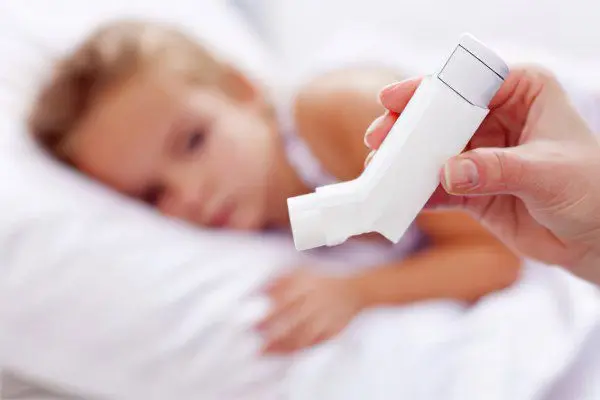
Despite the benefits of using antibacterial drugs, they have a sufficient number of side effects harmful to the child’s body. Most often, a child develops intestinal dysbacteriosis due to the disturbed balance of microflora. This condition is characterized by bloating, constipation, flatulence, diarrhea. Unpleasant symptoms can be avoided if you strictly follow the doctor’s recommendations.
Common side effects of antibiotic treatment in children:
allergic dermatitis;
tachycardia (increased heart rate);
candidiasis of the oral mucosa;
nausea;
burning and dryness of the nasal mucosa (when using drops with antibiotics);
anaphylactic shock.
In the event of such symptoms, stop taking the prescribed drugs and seek medical help. The attending physician will definitely select a safe remedy with an antibacterial effect. It is possible that the cause of such violations was inaccurate adherence to the instructions for use, non-compliance with the dosage.
Recovery of the child’s body after antibiotic treatment

Do not give up antibiotics because of the high risk of side effects for the child. Parents can do a lot to support their child’s body during antibiotic therapy. Breastfeeding children should be breastfed more often than usual to colonize the intestines with lactobacilli.
In artificially fed babies, the restoration of the intestinal microflora is carried out with the help of preparations with bifidobacteria: Linex, Bifidumbacterin, Hilak forte. Additional measures to support the body are the enrichment of the diet, the introduction of fermented milk products into it.
If an allergy to the components of the drug appears, it is immediately canceled, the manifestations are stopped with antihistamines: Ketotifen, Loratadin, Claritin, Cetrin, Diazolin. In any case, you should carefully monitor the reaction of the child’s body to antibiotics, follow the instructions for use.
Can a child be cured without antibiotics?
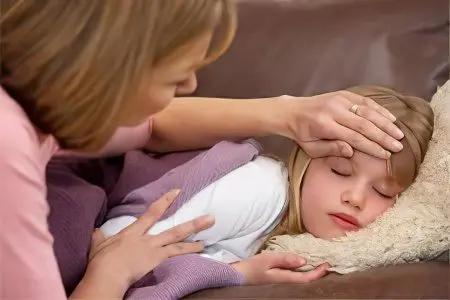
If, with a cold, ARVI, immediately apply complex treatment (bed rest, diet, inhalation, folk remedies, rubbing, washing the nose, drinking vitamin drinks), the manifestations of the disease can be stopped without consequences as soon as possible. However, most often the doctor does not hesitate to prescribe antibiotics to the child. The reason for this is the high risk of complications in today’s immunocompromised children.
Both the pediatrician and the parents are reinsured, fearing relapses of the disease, the appearance of complications.
Complications with bacterial rhinitis:
The appearance of thick yellowish discharge from the nose with an unpleasant odor;
Heat;
The spread of infection to the pharynx, tonsils, the appearance of a cough;
The development of sinusitis (headache when bending over, pressing on the sinuses of the nose);
Intoxication with waste products of bacteria (headache, nausea, dizziness).
Complications of otitis:
Inflammation of the inner ear (labyrinthitis) – dizziness, tinnitus, hearing loss, nystagmus, imbalance, nausea, vomiting;
Paralysis of the facial nerve;
Inflammatory process in the area of the temporal bone – mastoiditis, zygomaticitis;
Sepsis;
Meningitis;
Encephalitis;
brain abscess,
Cicatricial processes in the tympanic membrane, bearing persistent hearing loss.
Complications of pneumonia in children:
Intrapulmonary destruction – suppuration in the form of an abscess at the site of a cellular infiltrate, accompanied by increased cough, pyopneumothrax.
Synpneumonic pleurisy – the appearance in the pleura of purulent, hemorrhagic or fibrinous-purulent exudate.
Metapneumonic pleurisy – the appearance of fibrin in the pleura, pericarditis, fever, fever.
Pyopneumothrax – an increase in the volume of air in the pleural region due to a breakthrough of an abscess, accompanied by acute pain, respiratory failure.
Do not take antibiotics uncontrollably to avoid the development of microbial resistance to them.









